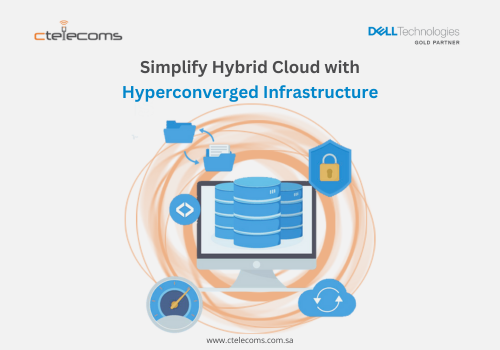

2025/04/23 Computing & Hyper-converged Infrastructure Solutions 11 visit(s) 3 min to read
Ctelecoms

Do you have a hybrid cloud operation that uses a mix of on-premises, private cloud, third-party, and public cloud services?
If so, your IT team is likely managing a complex set of cloud resources, including compute, storage, and network resources, for each type of cloud and cloud provider. That's a lot of cloud resource management overhead, and it comes at a significant cost!
The cost of cloud resource management includes not only the expenses for each provider and resource but also the considerable effort required to integrate and orchestrate workloads across clouds with their different sets of capabilities.
And all of this cost and complexity has one more effect - it's slowing down your business.
So how can you take advantage of the hybrid cloud without slowing down your business?
Hyper-converged infrastructure (HCI) provides a transformative method for managing hybrid cloud workloads by integrating compute, storage, and networking into a software-defined platform. This unified approach simplifies the deployment, management, and scaling of applications, including integration platforms and services, offering key advantages like simplified management, enhanced performance, and scalable, flexible infrastructure.
HCI simplifies workload management with a central platform for easy resource monitoring and management, reducing deployment and scaling complexity. Its single interface streamlines provisioning, application deployment, and lifecycle management, cutting operational overhead and freeing IT for strategic tasks.
Running application workloads on HCI optimizes performance through its tightly integrated architecture. Co-located compute and storage minimize latency and improve response times for data-intensive applications. Advanced data services like deduplication, compression, and caching further enhance data storage and access efficiency, crucial for high-throughput, low-latency workloads like databases and analytics.
HCI enables seamless application workload scalability, allowing you to start small and scale resources by adding nodes or within nodes as needed. This modular approach supports dynamic application needs without large upfront investments. Furthermore, HCI's flexibility accommodates diverse application types, from traditional to microservices, suiting various deployments.
If cost savings are a priority, HCI presents a strong solution by consolidating hardware resources and streamlining management. This convergence of compute, storage, and networking reduces the need for separate hardware, leading to lower capital (CapEx) and operational (OpEx) expenditures. Moreover, HCI's efficient resource use and granular scalability allow for optimized spending based on real-time needs, eliminating the waste of overprovisioning for peak demands.
Designed for high availability, HCI includes built-in redundancy and failover to maintain application workload uptime despite hardware issues. Integrated data protection and disaster recovery tools, such as snapshots and replication, provide added resilience for quick recovery and minimal downtime.
HCI streamlines security policy enforcement across infrastructure and applications through its centralized management, simplifying the application of consistent security measures like firewalls and encryption. However, proper configuration and maintenance are crucial for robust threat protection.
Here are the key future trends of Hyper-Converged Infrastructure (HCI) presented as points:
If hybrid cloud management is getting too complex and expensive, it's time for a simpler solution. Hyper-converged infrastructure (HCI) reduces management overhead and provides the scalability, performance, and cost-efficiency to fuel your business growth, allowing you to focus on what matters most: driving value.